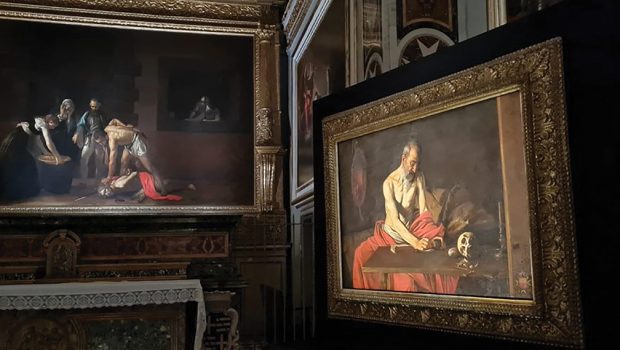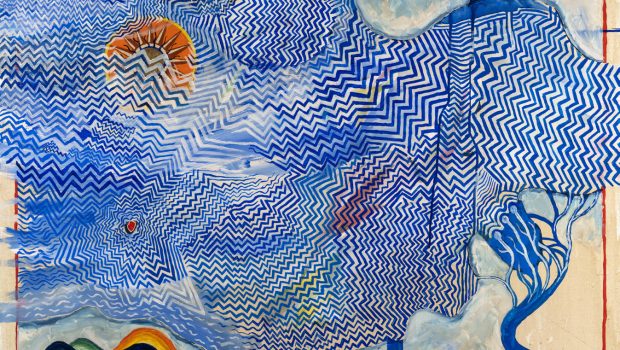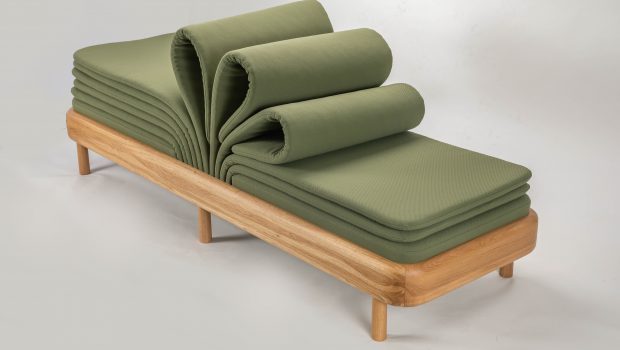Of dives, distortions and disorientation: Variable Depth, Shallow Water.
Distortion was necessary to awaken the imagination, to lure and, ultimately, persuade the mind of the viewer
By the end of the fifteenth century, Western European artists had already begun to perceive the forceful impact the development and understanding of linear perspective was to have on the future of painting. What this optic notion entailed, however, was not simply an accurate depiction of the ‘real’ world but, essentially, a distortion imposed by perspective on the real, tactile world. Distortion was necessary to awaken the imagination, to lure and, ultimately, persuade the mind of the viewer. Similarly, bringing an imaginary place into existence – stemming from the rediscovery of literature on mythical lands and civilisations – also came about in the fifteenth century, the quintessential age of exploration; it was a time when such ideas were transformed from a myth to a place to be discovered. Such, too, was it to be for Polish-born, Australia-based artist Izabela Pluta. “For me, the idea of ‘looking’ or searching for something – under the sea – became critical to this work, and took me diving”. Taking a deep breath, I put my pen to paper and, for a short while, dipped into her world.

At the time of Izabela’s exploration and research at Iseki Point (known as the Yonaguni Monument) in Japan in early 2018 – a most unnerving, yet certainly defining experience – news of the fallen sea arch at Dwejra reached her ears, inciting quite an instantaneous link between two disparate events. Both events, however, were subjected to the phenomenological effect of time: the contrast between the slow, imperceptible movements of sinking and shifting landmass, and the sudden ‘traumatic’ collapse and altered nature of that same landmass. Water connects all shores, no matter how distant. Later that year, Izabela found herself plunging into the sea where the Azure Window once stood. Her exploration of the ruins of the sea arch was, ironically, if not amusingly, determined by another collapse of sorts: the drone used to gather footage devastatingly crashed, corrupting the data retrieved from the site. This corrupted ‘ruined’ data forms part of the three-channel video featuring in the Malta exhibition, and presents a ‘collage’ of the topographies of ruin: underwater footage of the site, the ruin itself, and the ruined data.
Just as an atlas condenses the world and information about it into frames and pages bound together in a book, so too does an SD card. After capturing images at Dwejra, Izabela recalled how on the same storage card she found video footage recorded during her Marrgu residency programme. In 2018, Izabela was invited to live and work alongside local indigenous artists and leaders of the aboriginal community of Peppimenarti. “Being in that land and vastness has a particular effect on you, on how it makes you feel… a place of deep meaning that makes space for a unique experience of time”.Not unlike the sensation of being underwater,I thought. Earlier on in our conversation, I asked Izabela what the experience of time felt like in the ‘deep blue’. In a seemingly absurd set of connections, she had even imagined for a moment to present some of these residency photographs in the Malta exhibition.
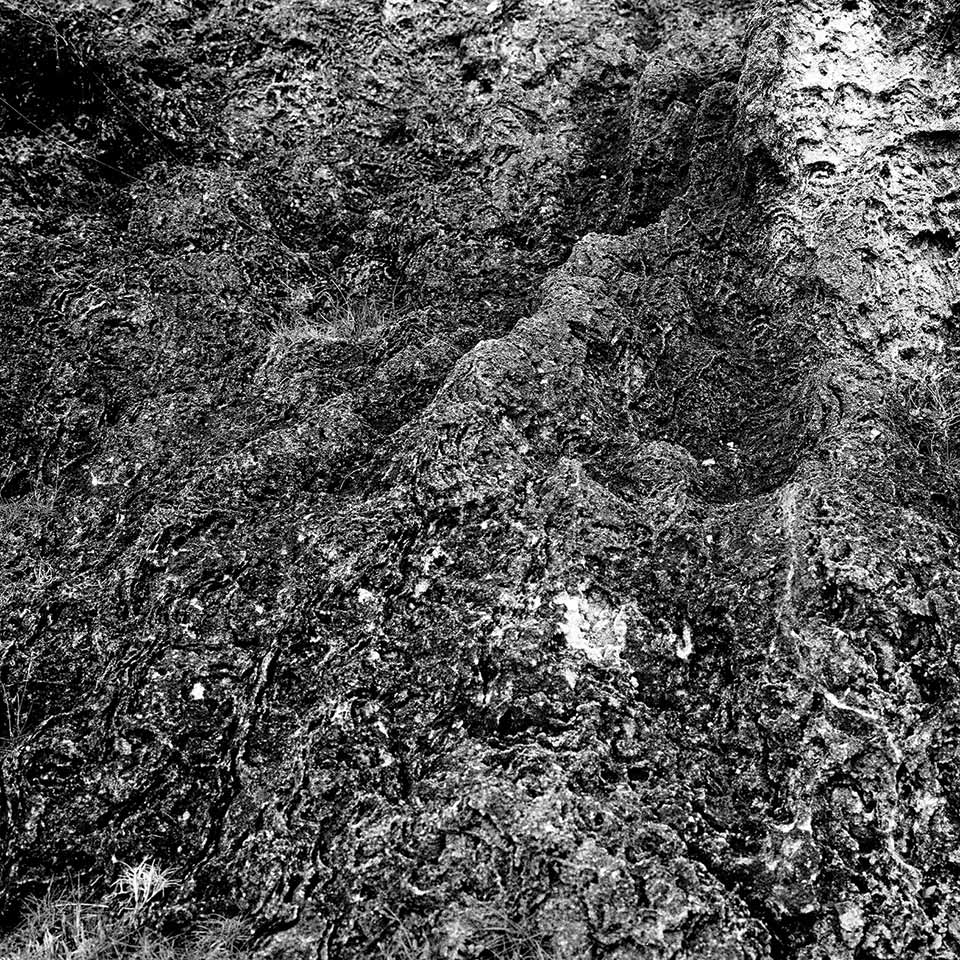
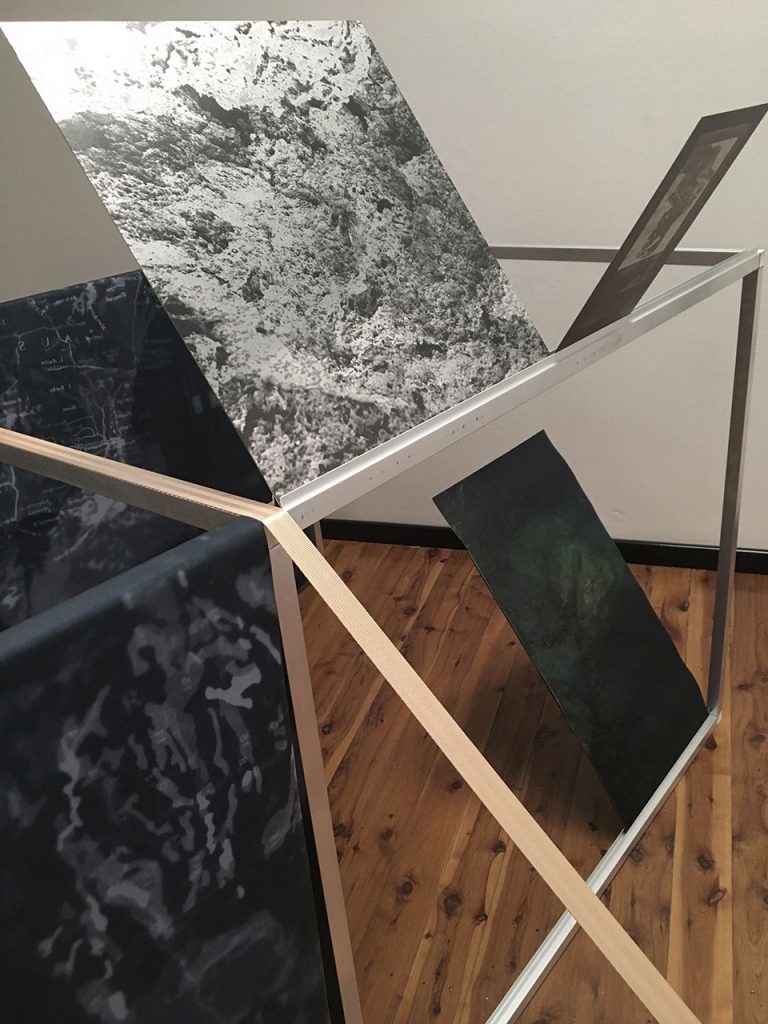
In any case, these strange correlations led to an exchange of views on belonging and non-places. In light of where it all started – the symbol of mythical Atlantis as a non-place – the conversation seemed to be spiralling into something deeper. Coincidentally, or perhaps not at this point, during the time Izabela was exploring underwater ruins, she was also creating contact negatives from a set of out-of-date atlases – a project that was partly displayed in the installation Figures of Slippage and Oscillation,at the Artspace Ideas Platform in Sydney, in 2018. “As someone who came to Australia from Poland, I’m interested in how borders continually shift, in geography and the perception of place”. She thus began pulling out pages from several editions of the Penguin Dictionary of Geography that would serve as the historical basis of knowledge on which new unknown cartographic variables may emerge.
In the darkroom, using an enlarger and camera-less technique, she passes light through those pages featuring photographic plates to create new images. “Born out of the absence and presence of light and their reaction to the material surface of the oceanic atlas, the imagery will fuse together two mapped depths of the sea – originally printed on both sides of the page – while light passes through the substrate to disrupt the assumptions around how depths are depicted and perceived”. The maps on either side of the original paper merge together resulting in new and random distances and depths – simultaneously real and imag(in)ed. These resulting images, a set of which will feature in the Malta exhibition, bring to mind Aby Warburg’s (1866–1929) picture atlas, Mnemosyne (1924),wherein meaning arises in-between seemingly unrelated and random images through a so-called ‘iconology of intervals’ – a network of intervals where the montages of images are produced simultaneously. Izabela’s esteem for Warburg’s method and approach to historical time is certainly not unfounded; it is very much how her own logic works, a constellation of thoughts that, at first, do indeed come across as a ‘crazy set of relations’.
But the arbitrariness and resulting uniqueness of Izabela’s prints does not end there. “This process of making contact negatives,” she explains, “produces undulations in the image in places where the original image lifts away from the photographic emulsion during printing… these ripples, or areas in the image that lack focus, could be read as deceptive spaces, provoking a sense of dislocation or disorientation from place and its original form”. Like some kind of nihilartikel or, indeed, fictitious entries or phantom settlements, these ‘deceptive spaces’ double up as non-places and, yet, are what give the print its uniqueness and unrepeatable, unmistakable quality. Absence disorients, just like having to swim away from the anchored presence of the cliff, or looking upon the still unfamiliar face of the Dwejra cliffs. It is almost felicitous that the cliffs face away from the East; they are themselves, literally and physically, disoriented.
All of this plays on the idea of misadventure and chance, on coincidence, disorientation, confusion and miscalculation; indeed, much like the refractive experience of trying to observe and determine distances, depths and forms underwater. “The water plays tricks with distance – you cannot see it whole”, Australian writer and poet, Lisa Gorton, reflects in the catalogue text that accompanied Apparent Distance (2019), the culmination of Izabela’s photographic interpretation of the Yonaguni Monument. A prerequisite to the project, in a way, was uncertainty, not knowing – an awfully tantalising condition for an observer and researcher like Izabela, being both an artist and academic. Perhaps, it is precisely the reason why she found herself at Dwejra – just like at Iseki Point in Japan – ‘diving into the deep’, diving to confront the uncertain, to observe the site and result of a traumatic experience, to capture a memory of the destroyed, enshrined on the crust of the earth as a new source of life.
In all its uncertainty, this project has very much to do with the experience of death, or at best, of transition from one mode of existence to another: the apprehension of the inevitable, the trauma suffered by the body, darkness, disorientation, and, almost just as suddenly, the ensuing calm and stillness as some kind of encounter takes place. That encounter – the proximity to what was destroyed but, in a way, ‘lived’ – is the point of transformation. It is hardly a coincidence that several cultures, since antiquity, have marked their rite of passage or ‘rebirth’ by some kind of bodily submersion. To cross the sea, or the ocean, to be swallowed and carried by the waves only to make it once again to dry land, is not simply the marked witness of successful travel and human invention but of survival and the victory over death itself. It takes no far stretch of the imagination to think of our infamous megaliths, erected and oriented to the ‘reborn sun’, as a celebration of this survival; after all, the ancient builders had themselves faced uncertainty and, quite certainly, death, when crossing the channel to our Islands, to dry land.
Be it natural or man-made, what seems to result from that proximity to death is creation. Ruins, where the original form is in its most reduced state of existence, thrive on with a heightened sublimity that only the threat of destruction could have imparted to it. All creation that is faced by the imminent state of death or, better still, that has to some extent survived it – even if irreversibly changed by it – enters into the realm of the sublime, the mythical, even the sacred; some dedicate their lives to preserving and protecting it, others to recording, understanding and interpreting it. “I am a someone who wants to know things,” Izabela tells me, “but ultimately, I dedicate myself to making things, only to then discover what they are afterwards”.
Variable Depth, Shallow Waters curated by Nicole Bearman & Francesca Mangion is on at Spazju Kreattiv, Valletta, between 10 April–24 May 2020, and will include a panel discussion on 17 April and an art-film screening.

